Blue Jays: Looking around the league for a contract to eat
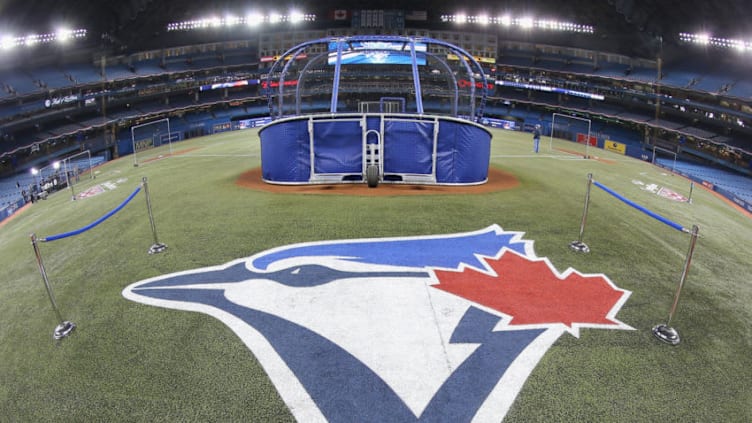
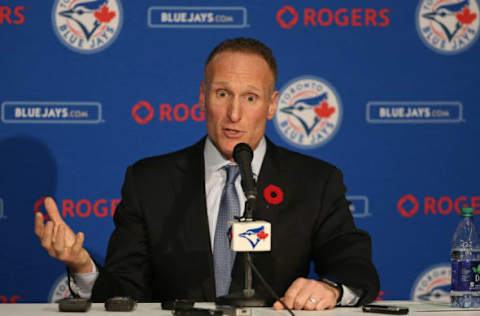
While the Blue Jays are expected to rebuild in 2019, there are plenty of ways to do that. One method could be looking for a contract to eat in exchange for prospect capital.
Last month I wrote about how I don’t expect the Blue Jays to be spending on any offensive additions to their roster, mostly because of the rebuild that has already started in Toronto and the depth of young position player talent in the organization.
I still believe that to be the case, however, I can certainly see how the Blue Jays could end up with a new face or two in their lineup next season, even if I don’t expect them to be active in free agency.
The reason I say this is because the Blue Jays are working on a rebuild, and there are several different ways that a front office can go about such a thing. The natural path is to build through the minor league system, maximizing the value of higher draft picks, and making sure the organization develops players on their way to the big leagues. We’ll often see teams trading veterans in exchange for a prospect return, which is what we witnessed in Toronto at this past year’s trade deadline. Generally speaking, the path to a rebuild is almost always through the minor league system.
The Blue Jays have an excellent system already, coming in third according to Baseball America’s rankings, but there is always room for more, especially when it comes to the various levels of the minor league system. While I’m sure that Ross Atkins and Mark Shapiro will continue to shop a few of their veteran players on the trade market, they could use another strategy to get prospect capital as well, and one they employed to a certain extent in 2017 when they dealt Francisco Liriano.
Sometimes teams are willing to hand over a decent prospect or two if the trade also involves a higher salaried contract. Using the Liriano example, the Blue Jays were able to get Teoscar Hernandez in exchange for Liriano, but the deal only worked because the Jays were willing to take Nori Aoki and his salary as well. While he wasn’t making a huge amount of money that year, the Blue Jays got a better prospect back because they took Aoki’s salary in the deal.
Could they employ a similar strategy this offseason? There are some situations that would be worth exploring at the very least, and the Blue Jays should have plenty of payroll room to work with. Let’s have a look.
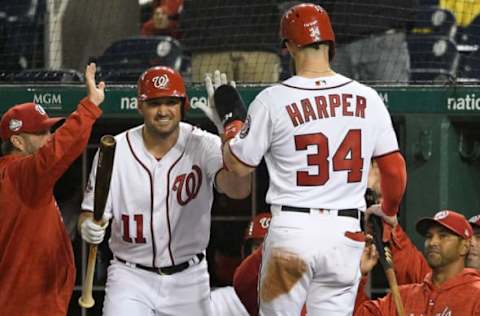
Washington- Ryan Zimmerman
Hear me out on this one, because I actually think it makes a lot of sense if the Nationals would be interested.
The Nationals signed Ryan Zimmerman to a six year, 100 million dollar contract before the 2014 season, and he has one guaranteed year left on the contract, and a club option for 2020. He’s set to earn 18 million in 2019, and the option of the same amount carries a two million dollar buyout, meaning he’s almost certainly due 20 million for one more season of control.
Why would this deal work for the Blue Jays? Well, with just one year remaining on his deal, Zimmerman wouldn’t require any commitment beyond next season, and the Nationals would probably like to rid themselves of his contract from their books, especially as they consider whether or not to offer Bryce Harper a monster contract to return as a free agent. Zimmerman had a resurgent year in 2017, but he battled injuries again in 2018, and was really bad in 2016.
Ryan Zimmerman crushes his SECOND HOMER OF THE GAME! pic.twitter.com/A2GXyGjGZ8
— Washington Nationals (@Nationals) August 11, 2018
This one would require the Blue Jays to send Justin Smoak back in a trade package, but his modest salary of eight million would still save eight figures for the Nationals, and give them some room to play with to pursue Harper, other free agents, and also keep in mind the dreaded luxury tax, which they are rumoured to want to stay under this winter.
I’m not certain what 10 million in savings would bring back the Blue Jays, but it would be worth exploring. There’s also the fact that Zimmerman has a no-trade clause in his contract, so this one could be dead in the water as soon as he’s asked about it. Still, it doesn’t hurt to pick up the phone see if there’s a match. The Nationals hope to contend in 2019 with or without Harper, and adding Smoak/ridding themselves of Zimmerman and his contract could be worth a decent prospect or two.
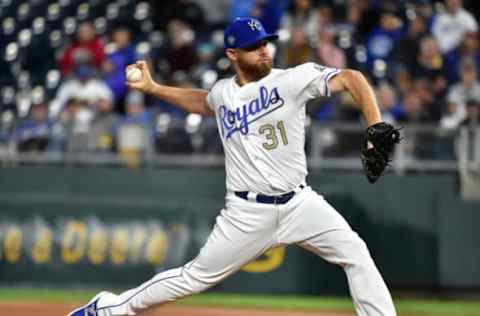
Kansas City- Ian Kennedy or Alex Gordon
This one is a little different than the situation with the Nationals, as the Royals are in the midst of a rebuild of their own. That said, teams that aren’t planning on competing are generally interested in shedding expensive veteran contracts, so it could be worth a call as well.
The Royals finished in the basement of the AL Central last season, winning just 58 games and staring up at a long rebuild in their division. The situation the Blue Jays are facing in the AL East isn’t a whole lot easier, but there are a couple of notable differences here.
First, the Royals do not have the high-ranked minor league system that the Blue Jays can look forward to, and are facing a longer rebuild than what’s expected in Toronto. As a result, they don’t have a stacked minor league system to deal from, and they may be reluctant to move any significant assets they do have, but that doesn’t mean a deal can’t be found.
Secondly, while Blue Jays fans like to complain about the lack of spending in a big market like Toronto, it’s much worse in Kansas City. They built a winner on a relatively small budget in the past, but they do have a couple of expensive veterans leftover from the glory days.
Two years ago, Royals GM Dayton Moore signed Ian Kennedy (!), coming off of a 0.7 fWAR season, to a 5-year, $70 million deal. Tonight, he signed Mike Moustakas, coming off of a 2.2 fWAR season, to a 1-year, $6.5 million deal. Times have changed quickly.
— Devan Fink (@DevanFink) March 9, 2018
Ian Kennedy could be a useful piece for the Blue Jays next season, even if it’s just in the form of eating some innings as a veteran arm in the rotation. The Royals could find the same use for him, but I doubt they want to pay him 16.5 million to do it, a figure he’s actually due in 2020 as well. The Blue Jays wouldn’t jump for joy at the idea of taking on that contract either, but if a decent prospect or two was attached, there’s some incentive to explore. They could use a capable veteran or two to help guide their budding young rotation pieces, especially if they consider trading Marcus Stroman or Aaron Sanchez in the next couple of seasons. In the big picture, it could make some sense.
There’s also Alex Gordon, who is due 20 million in 2019 on the final season of his current deal with the Royals. There is also a 23 million dollar option for 2020 that carries a four million dollar buyout, so the total the Blue Jays would be taking on would be at least 24 million, assuming they would turn down the option. While there isn’t the same need in the outfield, he’s another veteran contract I’m sure the Royals would be happy to shed, and the Blue Jays could certainly make use of him for one year if the circumstances were right.
It’s not a perfect fit by any means, especially because the Royals are rebuilding too, but stranger things have happened on the trade market.

Cleveland- Jason Kipnis
Trading with Cleveland makes too much sense not to bring up, whether I like it or not. I’ve never been fond of the constant rumours linking Mark Shapiro and Ross Atkins to anyone who has worked in Cleveland before, but if a trade makes sense then it doesn’t really matter who is on the other end of the phone.
Cleveland ended up losing out in the ALDS to the Houston Astros, and should be well positioned as a strong contender again in 2019. Their lineup is pretty loaded, but unfortunately they didn’t get the type of production out of Jason Kipnis at second base that they were hoping for, which is part of what lead to their eventual trade for Josh Donaldson, allowing them to move Jose Ramirez to second.
Last season Kipnis slashed .230/.315/.389 in 530 at bats, adding18 home runs, 28 doubles and 75 RBI. He wasn’t horrible by any means, but his 1.6 bWAR were a far cry from the 4.2-5.7 WAR seasons he was having a couple years ago. He’s also scheduled to make 28 million over the next two seasons, including a 2.5 million dollar buyout for 2021, and has been a frequent subject of trade rumours in the past.
The Indians' acquisition of Leonys Martin eliminated the need to move Jason Kipnis to center. Moments after the Trade Deadline expired, the veteran second baseman discussed that situation, his turbulent season and much more: https://t.co/envZpzAt3z
— Jordan Bastian (@MLBastian) August 1, 2018
The Blue Jays don’t need another infielder at all, but Kipnis does have some experience in the outfield as well. With the multi-year pact for the veteran as well, it would probably require a pretty solid prospect haul for the Blue Jays to consider taking his contract, and it’s hard to say whether that would be worth it to Cleveland or not.
I can’t imagine there’s any problem picking up the phone and making a call to Cleveland though, so it’s at least worth asking about.
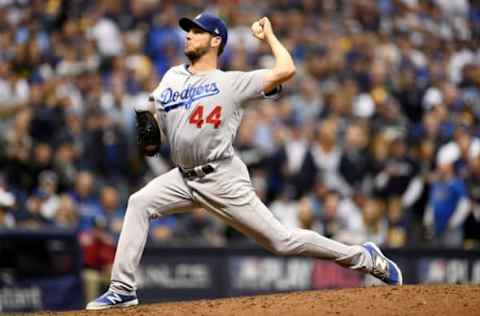
Los Angeles Dodgers- Matt Kemp or Rich Hill
Perhaps the fit that makes the most sense to me is with the Dodgers, who are going to be competing with the Red Sox in search of an elusive World Series title, for this group anyway.
Whether or not the Dodgers win the World Series, they’ll have some tall tasks this winter regardless. They’re facing the possibility of having to re-sign Clayton Kershaw, as well as Yasmani Grandal‘s impending free agency. They’re also carrying a couple of players with big contracts that they could arguably do without, and I’m sure they’ll explore offloading them after their season is over.
Matt Kemp had a big bounce back season in L.A., but that doesn’t mean the Dodgers will want to carry the 21.5 million he’s owed in 2019. He proved far more useful than they would have ever imagined, but there are also several much cheaper options on the outfield depth chart that should be able to handle the gig just fine. The Blue Jays don’t need outfielders either, but Kemp doesn’t require full-time at bats these days, and could be a decent mentor for the younger hitters.
More from Jays Journal
- Matt Chapman has been exactly what the Blue Jays needed
- Blue Jays: The goalposts are moving in the right direction
- Single-A Dunedin Blue Jays advance to the Championship Series
- Blue Jays: Comparisons for Alek Manoah’s Second Season
- Blue Jays: Adam Cimber, the unlikely decision King
They also have Rich Hill under contract for one more season, one that will pay the left-hander a whopping 18 million, He’s been very good when he’s been healthy, but unfortunately he’s had struggles staying on the mound since becoming a Dodger. That said, his problem has primarily been with blister issues, so perhaps there is additional value in having him join Aaron Sanchez, and even Marcus Stroman, and passing on any advice to the younger starters that he may have learned.
The Dodger’s ownership group has notably deep pockets, but they’ve been spending a ton of money for several years now, and no one likes being hit by the luxury tax these days. If they’re willing to attach enough prospect value to one or both of Kemp or Hill, there could legitimately be a match here, especially with the latter. It’s possible the Dodgers still view Hill as an asset after a season with 24 starts and a 3.66 ERA, but his 18 million dollar salary, shaky recent injury history, and the fact that he turns 39 next year could add up to be enough to change their perspective.
https://twitter.com/PitchingNinja/status/1052383435052998657
None of the examples I’ve mentioned are perfect fits, and it’s hard to say whether or not ownership would approve a move for the front office anyway. However, it is a creative way to try and gain more prospect capital back in a greater hurry, and the Blue Jays should have plenty of payroll room. It’s possible that figure could drop as much as 40-50 million already, and that’s without trading any of the existing veteran contracts.
dark. Next. David Bell named Reds' manager, off Jays' consideration list
It would have to be the right fit, but if taking on a high-salaried veteran for a season or two meant the Blue Jays could add another useful arm or two to the prospect stables, why not consider it?